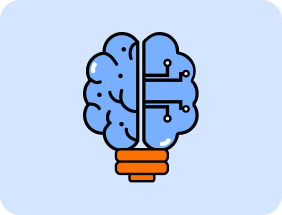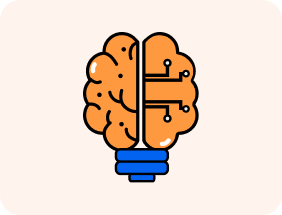How Schools Can Use YMetaconnect to Build Self-Directed Learners
In today’s rapidly evolving education landscape, the ability to learn independently is one of the most critical skills students need. Schools are increasingly seeking tools that go beyond content delivery and help develop life-long learners. That’s where YMetaconnect comes in, a smart edtech for schools designed to build self-directed learning, enhance student agency, and cultivate a reflective mindset.
This article explores how schools can use YMetaconnect in classrooms to promote learning independence, support metacognitive growth, and empower students to take ownership of their educational journey.
What is Self-Directed Learning?
Self-directed learning (SDL) is when students take charge of their learning process, planning, executing, and evaluating their learning goals and progress. It involves:
Setting personal learning goals
Choosing strategies that work best for them
Monitoring their own progress
Reflecting on what they learned and how they learned it
SDL promotes student agency, helps learners become more motivated, and builds essential skills like critical thinking, time management, and self-assessment.
But how can schools actively encourage this? Through the right support systems and edtech that promotes ownership like YMetaconnect.
The Role of Schools in Building Student Autonomy
Schools are the foundation for nurturing student autonomy, but learners need structured support to become self-directed.
Student autonomy doesn’t happen overnight, it develops through guided practice, reflection, and exposure to learning strategies.
Traditional classrooms often focus on content delivery, but miss opportunities to help students understand how they learn best.
Many students lack access to reflective tools that promote awareness of their own learning habits, strengths, and gaps.
Schools need metacognitive tools that encourage students to pause, reflect, and take control of their learning journey.
This is where YMetaconnect steps in as an effective edtech for schools, offering:
Guided learning cycles (Review–Action–Reflection)
Personalized strategies based on learner profiles
Self-assessment and reflection modules
Tools that promote student agency and ownership
With YMetaconnect, students gradually shift from passive receivers of information to active, self-aware learners.
Schools that integrate such tools help students build learning independence, preparing them for lifelong success beyond exams.
How YMetaconnect Builds Self-Directed Learners?
YMetaconnect empowers students to take charge of their learning through structured reflection, personalized strategies, and continuous self-assessment—helping them grow into confident, independent learners.
1. Assessing Learning Habits with SIMD
The SIMD tool in YMetaconnect helps students and teachers identify how each student learns best. It includes six modules:
Learning Strategy Inventory – Students discover their learning preferences.
Metacognitive Ability Assessment – Teachers and students get a snapshot of current metacognitive skills.
Goal-Setting and Timetable Dashboard – Students create personalized study goals and plans.
Exam and Assignment Wrapper – Encourages reflection before and after major tasks.
Daily Learning Journal & Self-Regulation Tracker – Helps students monitor emotions, habits, and progress.
Comprehensive Self-Regulation Learning Template – Builds self-awareness and personalized learning cycles.
These modules act as reflective tools that promote student agency by giving learners control over their study habits.
2. Embedding Reflection with the RAR Tool
The RAR framework (Review–Action–Reflection) transforms classroom learning into a personalized journey. Here’s how it works:
Step 1: Upload Learning Material
Students upload notes, chapters, or slides from class. The system breaks this content into smaller chunks for easy understanding.
Step 2: Review with Smart Learning Methods
YMetaconnect recommends learning techniques (e.g., mind maps, mnemonics, modeling) based on the student’s profile and content type.
Step 3: 3C Metacognitive Analysis
Students evaluate their understanding through:
Comprehensive Schema – Did I understand the main idea?
Critical Thinking – Can I connect this to what I know?
Communication – Can I explain this clearly?
Step 4: Reflection
Students respond to prompts that guide them to reflect on what worked, what didn’t, and what can be improved.
Step 5: Action Through Activities
Based on performance, students do individual or peer activities like flashcards, jigsaw technique, journaling, or presentations. These aren’t just tasks, they reinforce learning through practice and discussion.
This step-by-step structure makes YMetaconnect a unique edtech that promotes ownership.
Why YMetaconnect Works for Schools?
YMetaconnect is designed to seamlessly integrate into school systems, supporting both teachers and students without disrupting existing curricula. It enhances classroom instruction with reflective tools, personalized strategies, and real-time insights that foster independent learning and a growth mindset.
A. Fits into Any Curriculum
YMetaconnect is content-agnostic, meaning it can be used across subjects—math, science, language, or humanities. Teachers simply upload existing class material, and the platform supports personalized reflection and strategy-building.
B. Teacher Support, Not Replacement
YMetaconnect isn’t here to replace teachers, it’s here to support them. Teachers get insights into student progress, learning styles, and reflections, which helps them personalize support.
C. Real-Time Feedback and Data
Educators can track each student’s progress, strengths, and areas that need improvement based on real student reflections and activity performance.
D. Cultivates a Growth Mindset
By using daily journals, self-checks, and actionable tasks, YMetaconnect encourages a growth mindset in learners. Mistakes become part of the process, not something to fear.
Implementing YMetaconnect in the Classroom
Bringing YMetaconnect into your school is simple, flexible, and highly rewarding. With its student-centered design and teacher-friendly interface, the platform complements any teaching style or curriculum.
Here’s how schools can successfully implement YMetaconnect and start building self-directed learners from day one.
1. Start Small
You don’t need to change everything at once. Begin by introducing YMetaconnect in one or two subjects, perhaps during a specific project, unit, or exam cycle. Teachers can experiment with the SIMD and RAR tools to observe how students engage.
Starting small allows both students and teachers to become comfortable with the platform and provide meaningful feedback for broader use.
2. Train Teachers and Students
Proper orientation sets the stage for success. Conduct short training sessions for teachers to walk them through how the tools work, what the analytics mean, and how they can guide students using YMetaconnect.
Students also benefit from an initial demo, which explains how to upload materials, use learning strategies, reflect, and engage in skill-building activities. The platform is intuitive, and AI-based prompts help users at every step.
3. Encourage Daily Use
Consistency is key to cultivating independent learning habits. Schools should aim to integrate at least one YMetaconnect activity per subject each week.
Encourage students to write in their Daily Learning Journal, reflect using the 3C Analysis, or choose an action activity after lessons. Regular engagement helps students build metacognitive awareness and turn reflection into a habit, not a one-time task.
4. Involve Parents
Learning doesn’t end in the classroom. YMetaconnect offers a valuable opportunity for parents to understand their child’s progress, strengths, and growth areas.
Through shared access to self-assessment summaries and feedback reports, parents can support students at home, celebrate progress, and help reinforce a growth mindset. This strengthens the school–home connection and promotes continuous learning across environments.
Final Thoughts
The world doesn’t just need students who can memorize content, it needs smart learners who can adapt, reflect, and grow. Schools that invest in YMetaconnect for classrooms are giving students the gift of lifelong learning skills.
By using reflective tools, promoting student agency, and supporting building student autonomy, YMetaconnect is more than a digital tool, it’s a mindset shift.
If your school is ready to nurture self-directed learning through powerful and easy-to-use edtech, it’s time to explore YMetaconnect.
Read More


 Learner
Learner Mentor
Mentor Organisation
Organisation
 Learner
Learner Mentor
Mentor Organisation
Organisation










